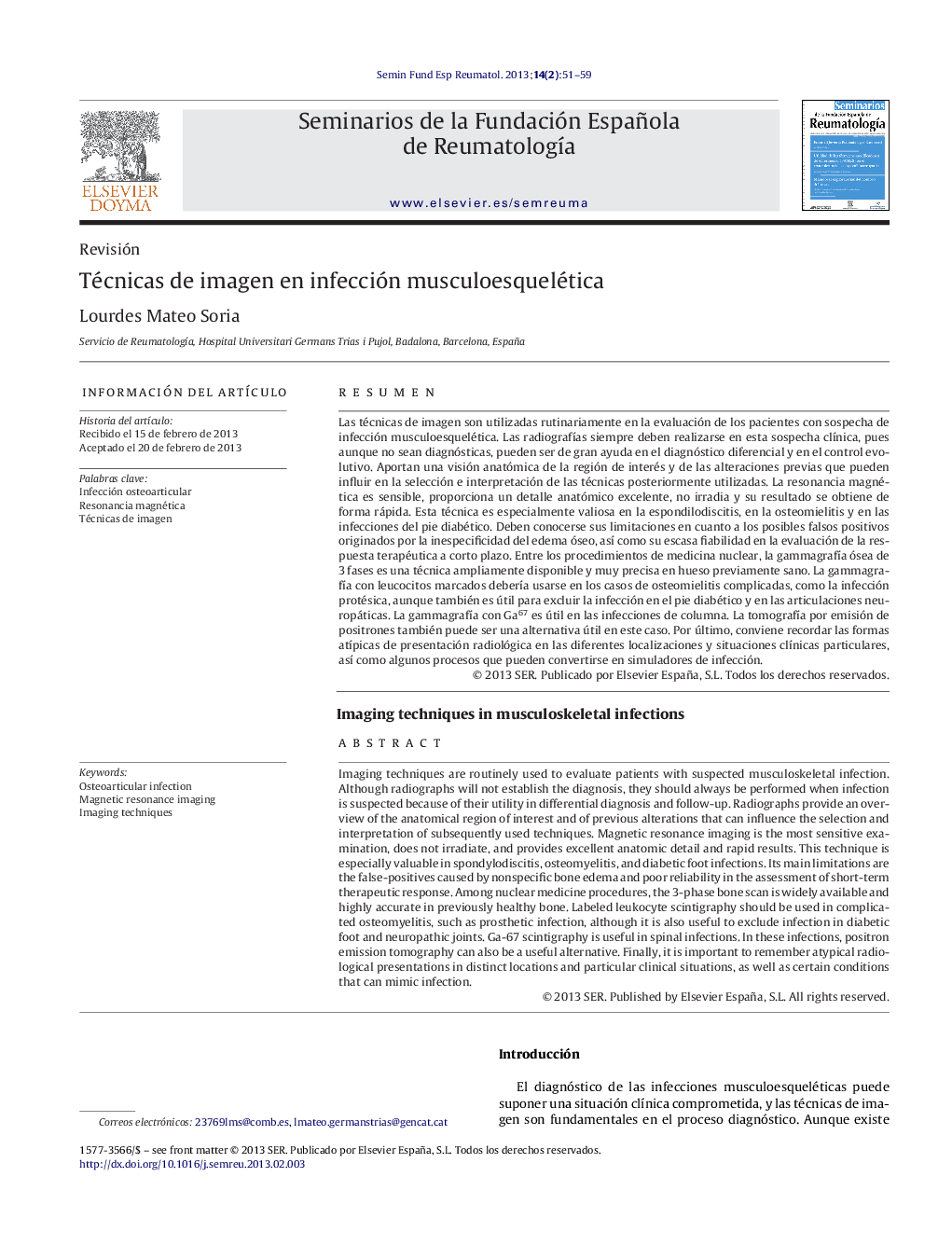| Article ID | Journal | Published Year | Pages | File Type |
|---|---|---|---|---|
| 3391016 | Seminarios de la Fundación Española de Reumatología | 2013 | 9 Pages |
Abstract
Imaging techniques are routinely used to evaluate patients with suspected musculoskeletal infection. Although radiographs will not establish the diagnosis, they should always be performed when infection is suspected because of their utility in differential diagnosis and follow-up. Radiographs provide an overview of the anatomical region of interest and of previous alterations that can influence the selection and interpretation of subsequently used techniques. Magnetic resonance imaging is the most sensitive examination, does not irradiate, and provides excellent anatomic detail and rapid results. This technique is especially valuable in spondylodiscitis, osteomyelitis, and diabetic foot infections. Its main limitations are the false-positives caused by nonspecific bone edema and poor reliability in the assessment of short-term therapeutic response. Among nuclear medicine procedures, the 3-phase bone scan is widely available and highly accurate in previously healthy bone. Labeled leukocyte scintigraphy should be used in complicated osteomyelitis, such as prosthetic infection, although it is also useful to exclude infection in diabetic foot and neuropathic joints. Ga-67 scintigraphy is useful in spinal infections. In these infections, positron emission tomography can also be a useful alternative. Finally, it is important to remember atypical radiological presentations in distinct locations and particular clinical situations, as well as certain conditions that can mimic infection.
Keywords
Related Topics
Health Sciences
Medicine and Dentistry
Immunology, Allergology and Rheumatology
Authors
Lourdes Mateo Soria,
